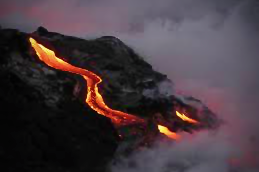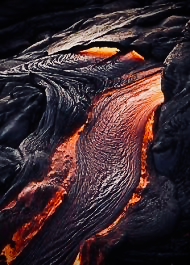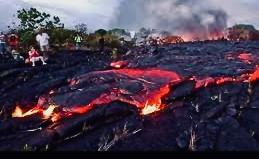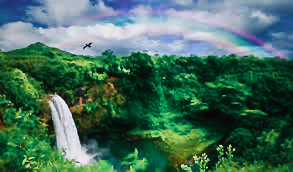DESTINATION: DISPERSION. Hawaii, Lei or Nay?
Destination: Dispersion (Premise).
Shall we? Have we the heart and gumption to visit Hawaii right now? More specifically, the Big Island, what with its volcano still booming and bursting away? And hurricane category storms on the way?
Reality check: No denying, Kilauea, and the 6.9 magnitude earthquake that quickly followed, are hazardous enough to give any traveler pause. Numerous aftershocks have continued to rock Hawaii to the core,  molten lava oozing through over some twenty fissures up and down the rift zone has been consuming Lower Puna homes (at least 37) and vehicles, blocking highways and trails, isolating communities throughout the island’s southeastern edge. Hawaii Volcanoe’s National Park finally had to close in the face of further explosive eruptions, with their jet engine-decibel noise and cannon-like rumbling.
molten lava oozing through over some twenty fissures up and down the rift zone has been consuming Lower Puna homes (at least 37) and vehicles, blocking highways and trails, isolating communities throughout the island’s southeastern edge. Hawaii Volcanoe’s National Park finally had to close in the face of further explosive eruptions, with their jet engine-decibel noise and cannon-like rumbling.
Since the sudden collapse of Kilauea’s crater floor of a long-active side vent, resulting in the plunge in a molten lake inside the volcanic summit’s larger crater, large volumes of ash and magma spewed forth, hellaciously red lava exploding up to 20,000 feet in the air, even sparking red aviation alerts. But beyond the ash plumes, oozing fissures and fiery lava flows, come toxic gases released via the massive Pu’u O’o crater eruptions.
Turns out that magma locks a colorless, odorous sulfur dioxide (SO2) inside it below ground, which is released as that semifluid magma rises to the surface. The rotten-egg/burning match sulfur di turns acidic as we breath it  in, potentially burning eyes and throat, causing breathing problems, lung spasms and chest tightness that can last 10-15 minutes or more upon ingestion. Meanwhile a vog (volcanic gas and ash fog) and laze (lava + seawater) develop that may cause pneumonia, headaches and bronchitis as it drifts in wrong way winds.
in, potentially burning eyes and throat, causing breathing problems, lung spasms and chest tightness that can last 10-15 minutes or more upon ingestion. Meanwhile a vog (volcanic gas and ash fog) and laze (lava + seawater) develop that may cause pneumonia, headaches and bronchitis as it drifts in wrong way winds.
Add to that the onset of further Kilauea eruptions hurling molten ‘ballistic blocks’ weighing up to 12 tons for a half-mile or farther, as well at vast showers of pea-sized fragments across the rift zones, and it is understandable why visitor cancellations have been raining down on destinations from Mauna Loa to Hawaii’s southeastern shore ($5m lost revenue thus far).
So we’d have to be coconuts to head that way, right? But whoa, wait a sec, that’s mainly tourists peeling off, and we know what world weenies they can be. Think about it: Kilauea may be a big volcano, but Hawaii is the Big Island. The threatened rift zones and Hawaii Volcanoes National Park altogether can’t constitute more than a small amount (5-10%) of the entire isle. So what about Hilo (25 mi. away), or Kailua-Kona? Volcanoes Park may be shuttered, but there is Pu’uhonua o Honaunau National Historic Park on Hawaii’s western coast, or Puukohola Heiau National Historic Site further north. In any case, maybe best to steer clear of the ‘disaster tour’ boats that are cutting it too close to the lava bombs.
Then again, what about not looking at the Kilauea region as just a dangerous, avoidable inconvenience, but a challenging, geo-historic adventure—unique, once-in-a-lifetime knowledge and experience to be gained? Besides, the worst of the Pu’u O’o eruptions and creeping fissures may very well soon be calming, leaving behind so much fascinating geothermic residuum for more vigorous, intrepid Vamigrés to explore. 
That’s the Big Island today: Off the track, tourist winnowed, with off-season deals to score—still for the most part, hazard-free, no matter the breaking news. As for that hurricane watch, the islands (esp. Hawaii) weather Lane rather more flooded than fallen…
So why not brave it? And if you dare to go, only to find that Kilauea-active Hawaii is getting to you, there are at least four other islands Sandwiched in nearby. Namely, you can pick Maui, Moloka’i, Kaua’i—or even O’ahu (onto the other, smaller islands), and simply hop to it…nā huaka ‘i hele…

